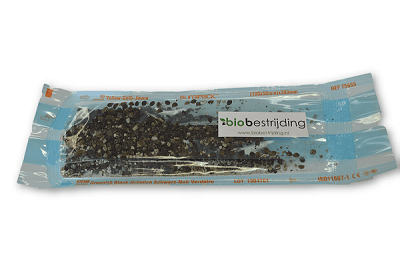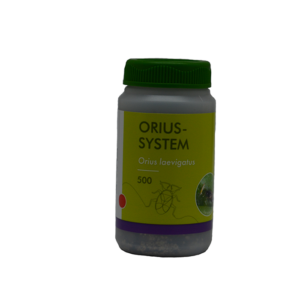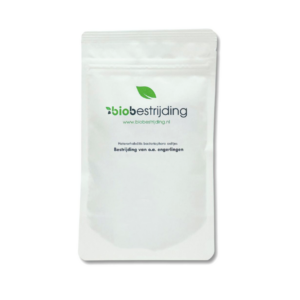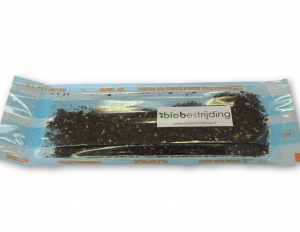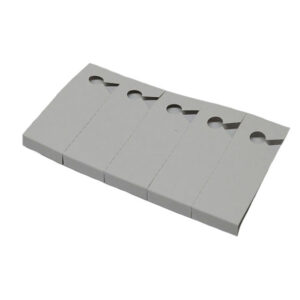Predatory mites against Varroa mite
Predatory mites against Varroa mite
€9,90 – €37,50 Incl. BTW
Combating Varroa mites can be completely non-toxic with Hypoaspis miles predatory mites. These predatory mites are the natural enemy of the Varroa mite and will leave your bee colony undisturbed. Thanks to the predatory mites, you don’t need to use chemical control agents that can also have a negative impact on your bees.
Extra informatie
| Shipping | Orders placed before 15:30 will be shipped the same day |
|---|---|
| Usage | Use the product as soon as possible after receipt; otherwise, store it cool, dark, and lying down for a maximum of 1-2 days. |
| Storage Temperature | 8 – 10 ºC |
| Application | In a beehive |
| Predatory mite | Hypoaspis miles |
Combating Varroa mites can be completely non-toxic with Hypoaspis miles predatory mites. These predatory mites are the natural enemy of the Varroa mite and will leave your bee colony undisturbed. Thanks to the predatory mites, you don't need to use chemical control agents that can also have a negative impact on your bees.
What You Receive:
- Hypoaspis miles predatory mites in a package containing eggs, young, and adult predatory mites and spreading material
- Instructions for use
Frequently Asked Questions
Click on the question to go directly to the answer.
What does the predatory mite do against Varroa mites?
How many predatory mites do I need against Varroa mites?
What are the optimal conditions for Hypoaspis miles predatory mites?
Is the Hypoaspis miles predatory mite dangerous or harmful?
Tips for combating Varroa mites with predatory mites
What Is a Varroa Mite?
The Varroa mite (Varroa destructor) is a parasitic mite that attacks honey bees. The mites cause bees to become sick, which can eventually lead to the extinction of an entire bee colony. An adult female Varroa mite is reddish-brown in color, while the male is white. The mites are flat and button-shaped, not larger than 2 mm. Want more information? Check out our page (in Dutch) on controlling the Varroa mite with predatory mites: De Varroamijt Biologisch Bestrijden Met Roofmijten
What Does the Predatory Mite Do Against Varroa Mites?
An adult predatory mite lives on average for about 6 weeks. During this period, females lay a large number of eggs. These hatch within 2-3 days. The young nymphs that emerge are fierce predators right from birth, immediately hunting Varroa mites. The predatory mite actively seeks out the Varroa mite and stings it. A stung Varroa mite falls down and is completely sucked dry by the predatory mite.
How Many Predatory Mites Do I Need Against Varroa Mites?
You need about 5,000 predatory mites per beehive. Normally, this population maintains itself as long as there is enough food. It is advisable to check this weekly. Take some soil from the hive and place it on white paper. Examine the material with a magnifying glass to see if there are still living predatory mites present. If so, everything is fine; if not, introduce a new dose of predatory mites.
What Are the Optimal Conditions for Hypoaspis Miles Predatory Mites?
To keep the predatory mite population active, a good habitat is important. The Hypoaspis miles is a soil-dwelling predatory mite and needs direct contact with the ground. Therefore, place a bottom tray under the beehive containing well-decomposed biocompost. Ensure that the soil is moist but not soaking wet, as the predatory mite can drown.
Inside the beehive, the temperature should be at least 12°C. The predatory mites become active at 12°C. Generally, bees ensure that the hive maintains a minimum temperature, allowing the predatory mites to survive year-round in the hive.
Is the Hypoaspis Miles Predatory Mite Dangerous or Harmful?
Hypoaspis miles predatory mites are found in the top soil layer and hunt various pest insects there. The predatory mites are not dangerous; they only target Varroa mites and leave the bees alone.
Tips for Combating Varroa Mites with Predatory Mites
- Open the package and evenly distribute the bedding with the predatory mites at the bottom of the beehive. Ensure there is biocompost at the bottom of the hive so that the predatory mites have a suitable living environment.
- Predatory mites thrive in a slightly moist soil. Keep the soil moist using an automatic drip system or by regularly spraying the soil.
- We work with the Belgian beekeeper Geert Steelant. Want more background information on bee-friendly beekeeping? Visit his websites:
Shipping information
We are able to ship this product to multiple countries in Euruope. Please contact us for the delivery costs and possibilities, you can send us an e-mail on: info@biobestrijding.nl
Extra informatie
| Shipping | Orders placed before 15:30 will be shipped the same day |
|---|---|
| Usage | Use the product as soon as possible after receipt; otherwise, store it cool, dark, and lying down for a maximum of 1-2 days. |
| Storage Temperature | 8 – 10 ºC |
| Application | In a beehive |
| Predatory mite | Hypoaspis miles |

